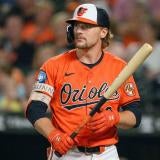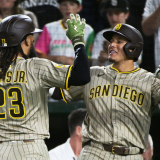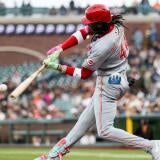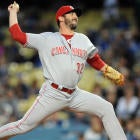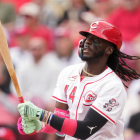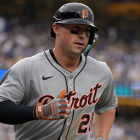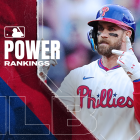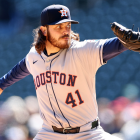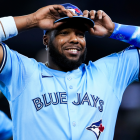Most baseball fans know that Major League Baseball's trade deadline was on Tuesday, July 31 at 4 p.m. ET. It's essentially the deadline for "free" trade, though, because trades in August can still happen. It's why the deadline Tuesday is technically called the non-waiver trade deadline.
In the here and now, let's discuss "non-waiver" wording above on how trades can go down in August. Trades can still be completed, it's just a lot more complicated and many players would never be traded in August. The logistics just wouldn't work out.
For any player that might be traded this month, here's the process:
To make things easier to understand, we need a player to use as our example here. The vehicle, if you will, is Reds starting pitcher Matt Harvey. He's 29 years old and is a free agent after the season. With the Reds, he's 5-4 with a 4.44 ERA (93 ERA+), 1.19 WHIP and 56 strikeouts in 73 innings. He's making $5.625 million this season. There's a chance he'd clear waivers, but the hunch is some contender would claim him. He'll work well for this exercise.
Here's how a deal would work:
- The Reds would place Harvey on waivers.
- If more than one team puts in a claim on Harvey, the one with the worse (or worst, in the cases of more than two teams vying for Chacin) record in the NL wins the claim. If no NL team claims him, the same process goes for the AL teams (and, obviously, vice-versa if the player is placed on waivers by an AL team). Playoff tiebreakers are used if teams tied in the standings place claims.
- If a claim is awarded, the Reds have three options. The first is the easiest and happens most often: They can pull Harvey back and just keep him. The reason this happens a lot is most teams try to get as many players as possible through waivers so they still have the option to trade him to anyone (more on that in the next bullet-point). If the player doesn't get through and they wish to keep him, teams just pull him back and he won't be traded this season. The second option here is to trade Harvey to the claiming team. It happens at times, it's just that neither team has a lot of leverage on these cases. The third option is to simply let the player go to the team that claimed him. This doesn't really happen with players who aren't saddled with large contracts, but it's possible that this would happen with someone who is. We'll get to that.
- If Harvey clears waivers, he can then be traded to anyone for the rest of the season. This is why teams like to get as many players through waivers as possible. Just so the options are on the table, even if they have no intention of trading said players.
- Once players have been through waivers, the trades then become more "normal" -- among players who have been through waivers and those not on 40-man rosters, of course. All no-trade clauses apply and money can change hands.
- Trades can still happen in this manner in September, but any player acquired during September isn't eligible for the playoffs. As such, Aug. 31 is another deadline.
- The waivers discussed above are called revocable waivers and that can only happen once per player. A player getting put on waivers a second time is now on irrevocable waivers and if he's claimed, he's gone and his original team can do nothing to stop it. Obviously, this means any player with value doesn't get put on irrevocable waivers, for the most part.
Next up, I mentioned "we'll get to that" on players with big contracts. Let's use Shin-Soo Choo as our vehicle for this part.
Choo is a 35-year-old DH who is due $42 million in 2019-20. He's having a very good year, but there really isn't much of a market for a player in his situation at this point.
To that end, it's pretty likely Choo could get through waivers and then, what if an AL contender sees one of its big guns go down with a season-ending injury? In that case, maybe Choo gets dealt in August. We saw Justin Verlander go to the Astros last August, so we know big moves are still possible.
![[object Object] Logo](https://sportshub.cbsistatic.com/i/2020/04/22/e9ceb731-8b3f-4c60-98fe-090ab66a2997/screen-shot-2020-04-22-at-11-04-56-am.png)




